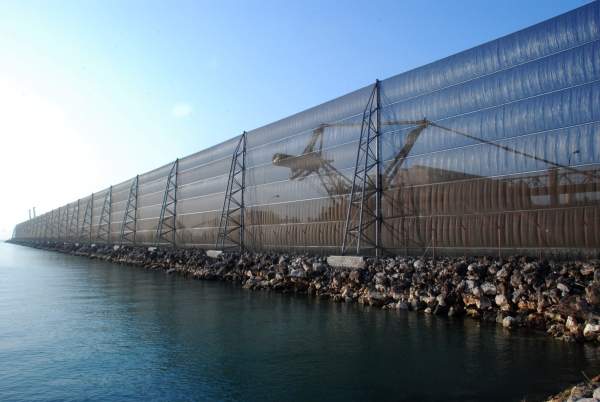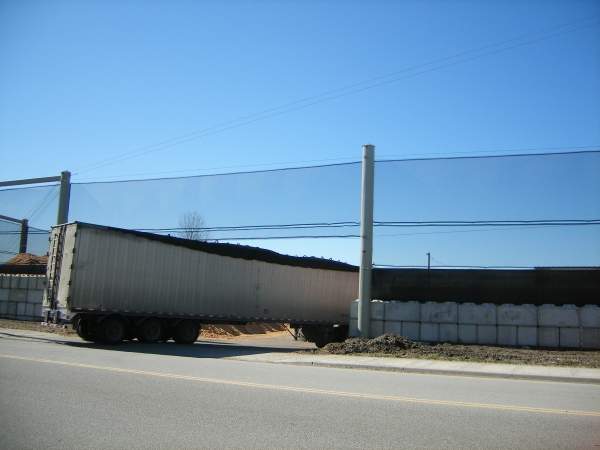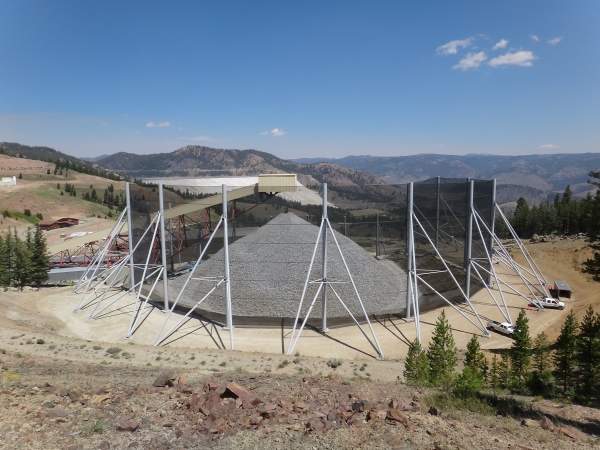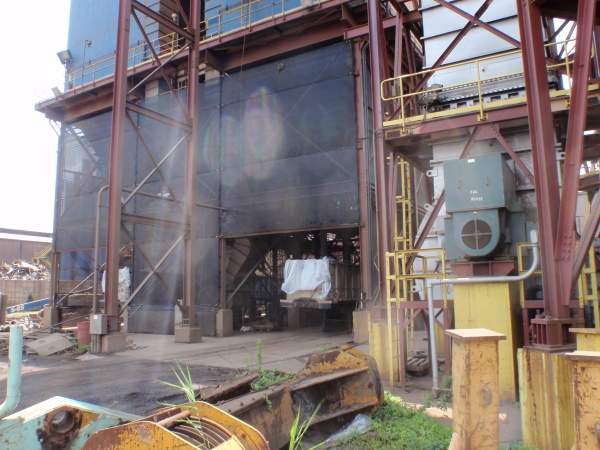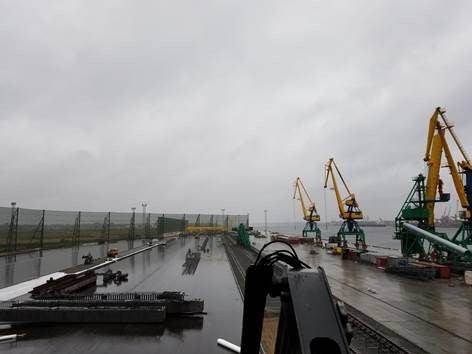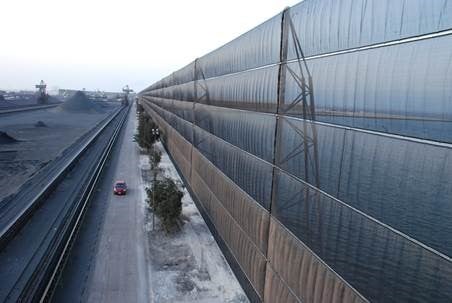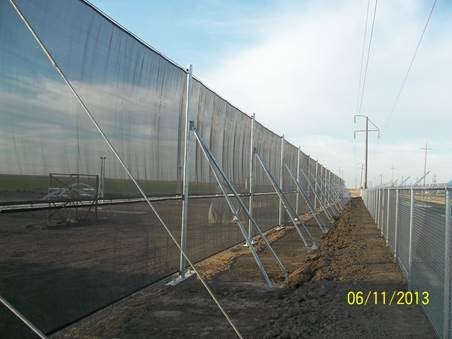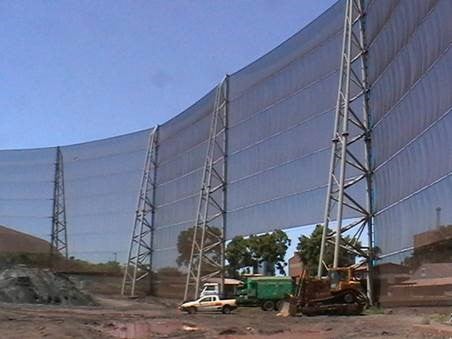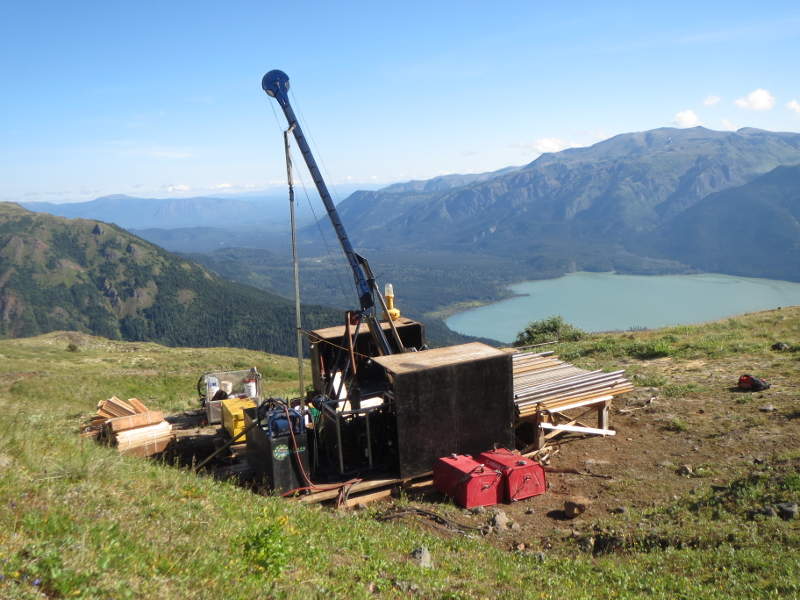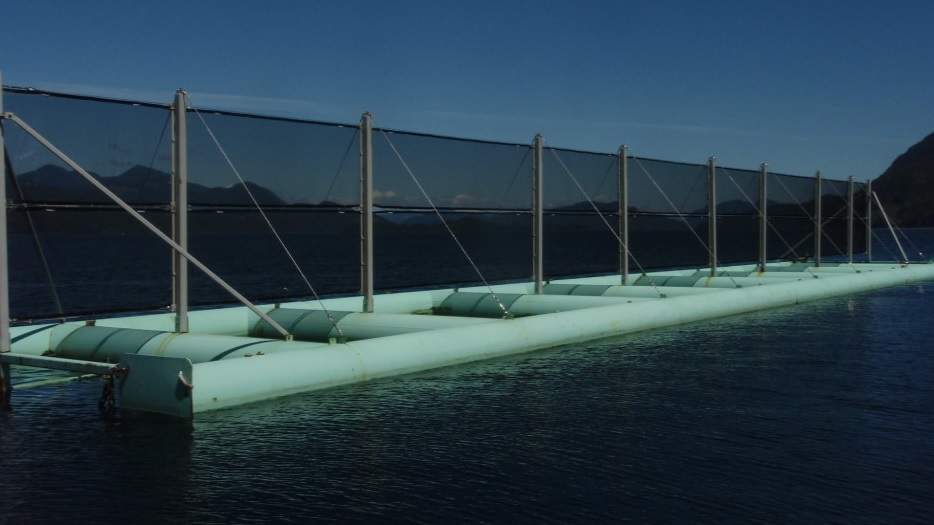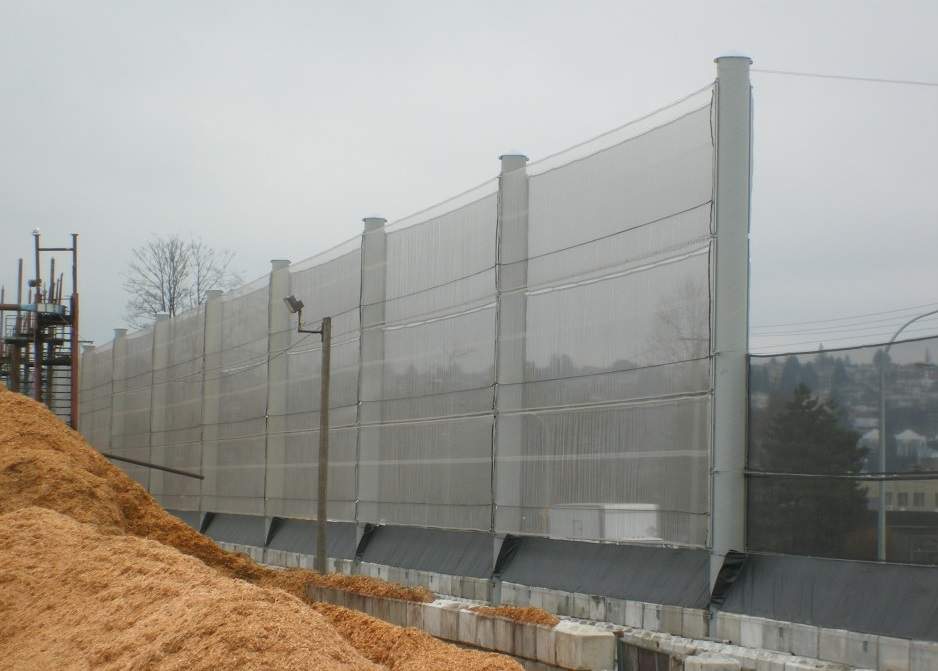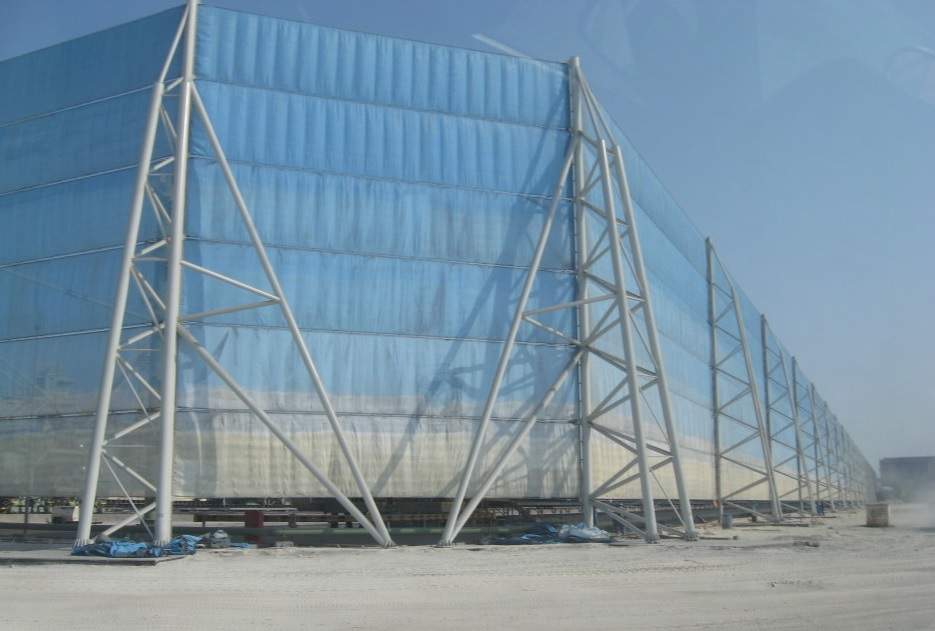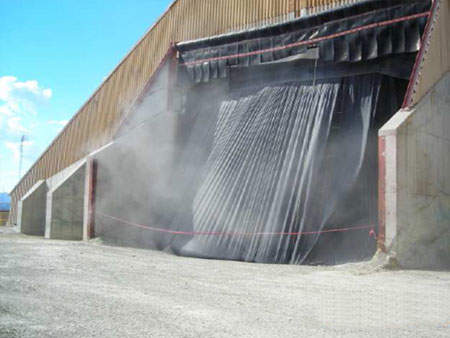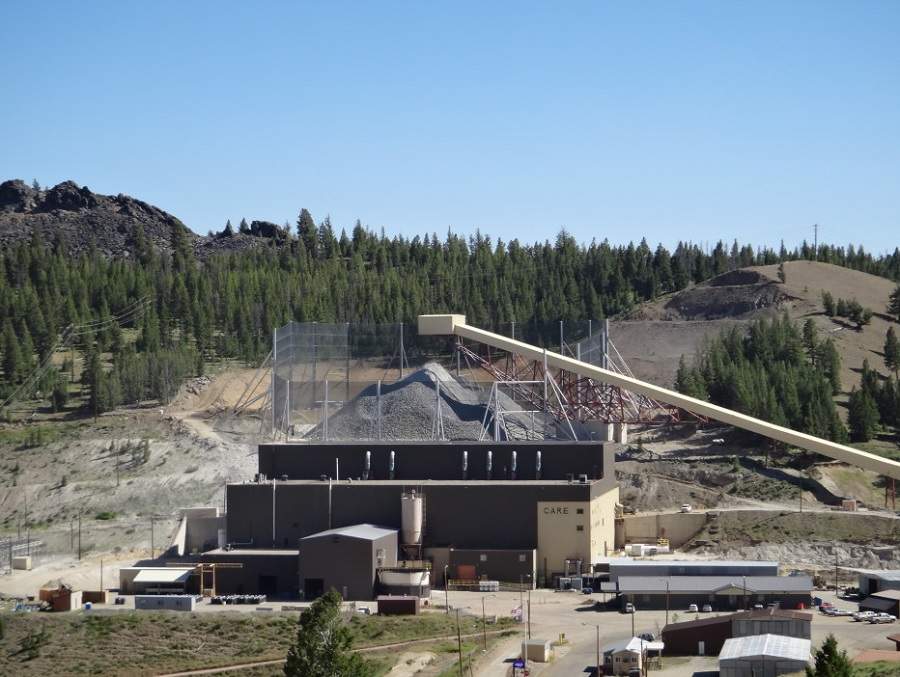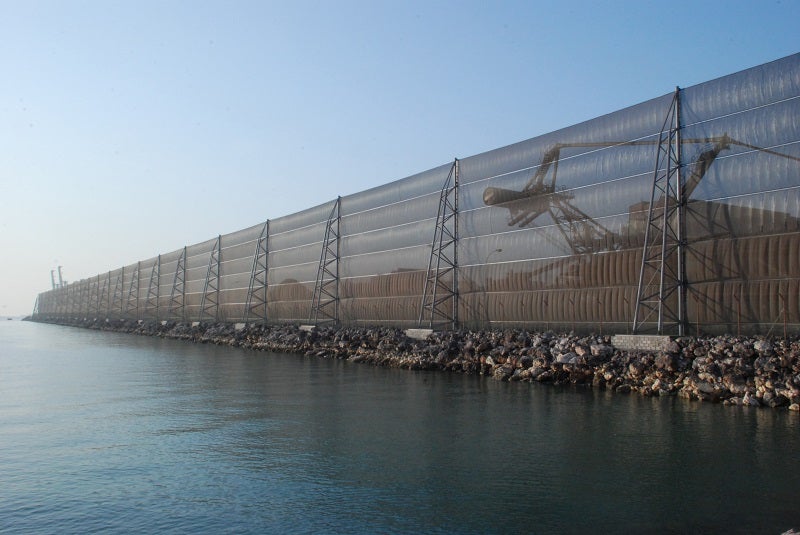
If you have a dust problem, we have the solution. WeatherSolve Structures wind fences (also known as wind walls, windbreaks, and wind shelters) are custom-designed to be as tall as 30m (100ft), and some are as long as 3km. The poles can be up to 36m (120ft) apart, making it easier to accommodate conveyors, roadways and machinery, and to cross railways. Because they are custom designs, they can even have doors for trucks or machinery to pass through.
WeatherSolve Structures designs have larger pole spacing to lower the structural costs, and there will be less disruption in the construction of the fence. These fences are low in maintenance as they are self-cleaning, and need no daily consumables such as oil, gas, electricity or water.
WeatherSolve Structures wind fences protect over 1,000 acres and with over 30 years of experience, these fences have proven themselves time and time again in such extremes as South Pacific cyclones, Hurricane Andrew (1992), the blistering heat of the Oman sun and the brutal cold of winters in Northern British Columbia.
How do wind fences control dust?
Slowing wind is the key objective in any dust control strategy, as it is wind that causes and distributes dust. Wind erosion of dust is proportional to wind speed cubed. Overall fugitive dust levels are proportional to about wind speed squared. This means that a well designed dust control wind fence can reduce fugitive dust by about 80% even over large areas like stockpiles.
The wind blows dust. It also blows airborne protection systems such as fog and water. WeatherSolve works with a range of suppliers of other dust control systems to produce complete dust control solutions for a range of situations from truck dumps and transfer towers to stockpiles and waste disposal areas.
Custom-designed systems for all weathers
WeatherSolve custom designs and supplies wind fence systems for dust control. Visit our website for other products and systems, as well as an extensive collection of wind fence and dust control information. We have been building wind, hail and shade systems around the world since 1986.
Our systems are unique. They include a number of specialized components unique to WeatherSolve. Some jobs are supplied on a turnkey basis; others are supplied engineering and cladding system only.
Best by test: wind fence criteria
WeatherSolve believes every control structure must meet four basic criteria. It must be:
- Durable in all weather conditions
- Effective
- Economical
- Easy to work with
Testing for wind fence durability
WeatherSolve is continually testing and developing systems to improve durability. As a result, many of our components are unique in the marketplace. This is because off-the-shelf items either don’t exist, or have not been designed to the level of strength we require.
Testing itself involves measuring absolute strength in critical situations, as well as cyclic loading over hundreds of thousands of cycles. We also visit our structures after major wind storms as part of our maintenance program.
Ongoing aerodynamic research
WeatherSolve conducts ongoing research to determine optimum aerodynamics for each and every situation. This includes working with organizations such as the Midwest Research Institute and the Center for Study of Open Source Emissions. We take great pride in creating structures that do what they are supposed to do efficiently and effectively.
Structures can also be adapted to perform additional functions such as security, shade or visual barrier. Maximum effectiveness for each individual function is assured by WeatherSolve computer modeling programs.
Foundations: economical solutions without sacrificing strength
With three quarters of the cost devoted to poles and foundations, WeatherSolve lowers price without sacrificing strength by minimizing the number of poles. A pole that is four times as strong, for example, costs only two to three times as much to build.
By using high-quality components, WeatherSolve structures require little to no maintenance, saving you even more money.
Dust control that helps your plant operate better
A structure needs to work in a manner that that makes plant operations easier through reduced dust and maintenance, easier security, as well as less cross-contamination. Normal traffic patterns should be maintained, even during construction. WeatherSolve systems allow large spans between poles and greater flexibility in pole placement, so these goals are very achievable.
Tell us the problem. We’ll show you the solution. Contact WeatherSolve today.


